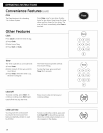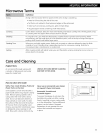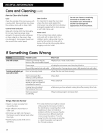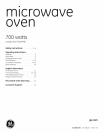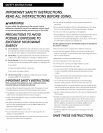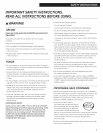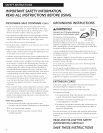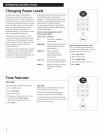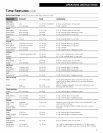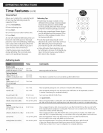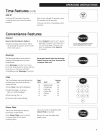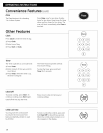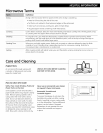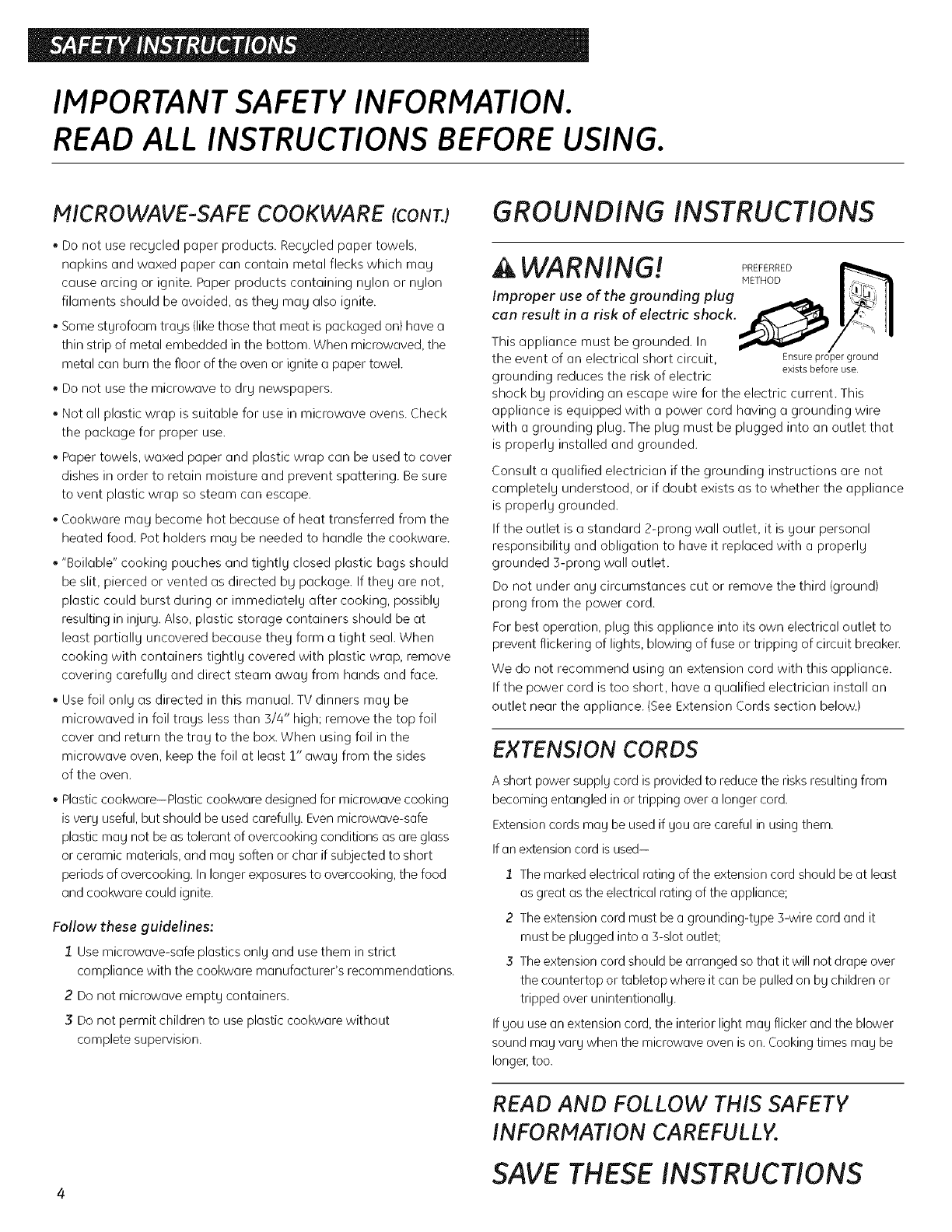
IMPORTANT SAFETY INFORMATION.
READ ALL INSTRUCTIONS BEFORE USING.
MICROWAVE-SAFE COOKWARE (CONT.)
, Do not use recgcled paper products. Recgcled paper towels,
napkins and waxed paper can contain metal flecks which nag
cause arcing or ignite. Paper products containing nylon or nglon
filaments should be avoided, as theg nag also ignite.
, Some styrofoam trags (like those that meat is packaged on) have a
thin strip of metal embedded in the bottom. When microwaved, the
metal can burn the floor of the oven or ignite a paper towel.
, Do not use the microwave to dry newspapers.
, Not all plastic wrap is suitable for use in microwave ovens. Check
the package for proper use.
, Paper towels, waxed paper and plastic wrap can be used to cover
dishes in order to retain moisture and prevent spattering. Be sure
to vent plastic wrap so steam can escape.
, Cookware nag become hot because of heat transferred from the
heated food. Pot holders nag be needed to handle the cookware.
, "Boilable" cooking pouches and tightly closed plastic bags should
be slit, pierced or vented as directed bg package. If they are not,
plastic could burst during or immediately after cooking, possibly
resulting in injurg. Also, plastic storage containers should be at
least partially uncovered because they form a tight seal. When
cooking with containers tightly covered with plastic wrap, remove
covering carefully and direct steam away from hands and face.
, Use foil only as directed in this manual. TV dinners may be
microwaved in foil trags less than 3/4" high; remove the top foil
cover and return the trag to the box. When using foil in the
microwave oven, keep the foil at least 1" away from the sides
of the oven.
, Plasticcookware-Plastic cookware designed for microwave cooking
isvery useful, but should be used carefully. Evenmicrowave-safe
plastic may not be as tolerant of overcooking conditions as are glass
or ceramic materials, and may soften or char ifsubjected to short
periods of overcooking. In longer exposures to overcooking, the food
and cookware could ignite.
Follow these guidelines:
1 Usemicrowave-safe plastics only and use them in strict
compliance with the cookware manufacturer's recommendations.
2 Do not microwave empty containers.
3 Do not permit children to useplastic cookware without
complete supervision.
GROUNDING INSTRUCTIONS
IMARNIIklGI P EEERREO
v vw ,. _, ,w., _ '_,,,o METHOD I
Improper use of the grounding plug _ II
This appliance must be grounded. In _ / "
the event of an electrical short circuit, Ensureproperground
grounding reduces the risk of electric existsbeforeuse
shock bg providing an escape wire for the electric current. This
appliance is equipped with a power cord having a grounding wire
with a grounding plug. The plug must be plugged into an outlet that
is properly installed and grounded.
Consult a qualified electrician if the grounding instructions are not
completely understood, or if doubt exists as to whether the appliance
is properly grounded.
If the outlet is a standard 2-prong wall outlet, it is your personal
responsibility and obligation to have it replaced with a properly
grounded 3-prong wall outlet.
Do not under any circumstances cut or remove the third (ground)
prong from the power cord.
For best operation,plug this appliance into its own electrical outlet to
prevent flickering of lights, blowing of fuse or tripping of circuit breaken
We do not recommend using an extension cord with this appliance.
If the power cord is too short, have a qualified electrician install an
outlet near the appliance. (See Extension Cords section below.)
EXTENSION CORDS
A short power supply cord is provided to reduce the risks resulting from
becoming entangled in or tripping over a longer cord.
Extension cords may be used if you are careful in using them.
If an extension cord is used-
1 The marked electrical rating of the extension cord should be at least
as great as the electrical rating of the appliance;
2 The extension cord must be a grounding-type 5-wire cord and it
must be plugged into a 5-slot outlet;
3 The extension cord should be arranged so that it will not drape over
the countertop or tabletop where it can be pulled on by children or
tripped over unintentionally.
If you use an extension cord, the interior light may flicker and the blower
sound may vary when the microwave oven is on. Cooking times may be
longer, too.
READ AND FOLLOW THIS SAFETY
INFORHATION CAREFULLY.
SAVE THESE INSTRUCTIONS
4



